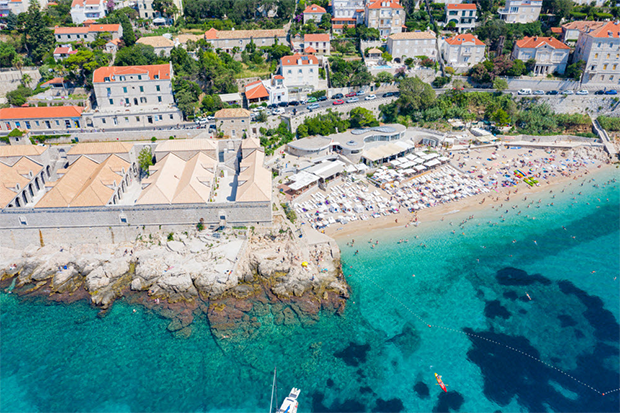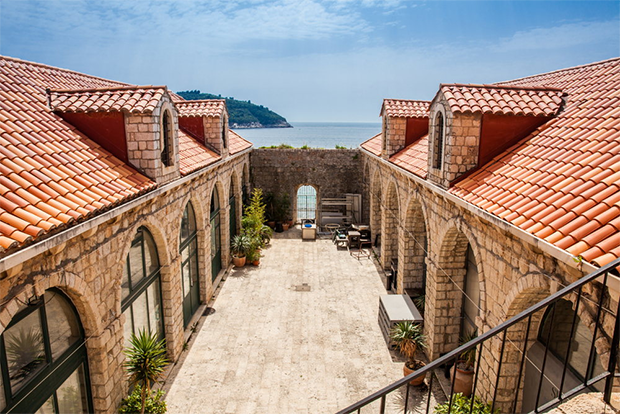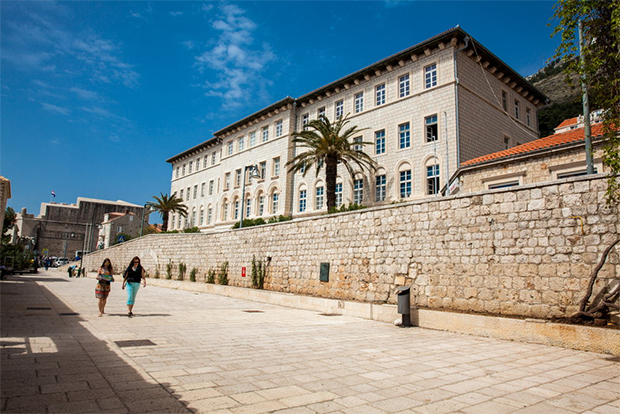|
Social distancing and quarantine are not new
concepts. During the Middle Ages, when Europe and Asia were devastated
by deadly outbreaks of plague and small pox, physicians had no idea
about viruses and bacteria, but they knew enough to isolate the infected
to arrest the spread of the disease.
The first official decree to introduce quarantine was by the Republic of
Ragusa, now the city of Dubrovnik in southern Croatia. Located on the
Adriatic coast, the Republic of Ragusa had an active port through which
people and goods entered from all over the world. When plague broke out
in the 14th century in countries across the Mediterranean and the
Balkans, the Great Council of the Republic passed a legislation
according to which all merchants, sailors, and goods arriving from
plague-infested areas were required to spend a month in quarantine. Only
if it was proven that the person was healthy, after the end of the
quarantine period, was he allowed to enter the city.
|
 |
|
The city designated three inhabited islands—Mrkan, Bobara and Supetar—located
some distance away from the walls of Dubrovnik, where the quarantines
had to pass their days. Initially, there were no living quarters on
these islands and the suffering of the people, without a roof over their
heads, were almost as deadly as the disease itself. The authorities
realized this and decided to build a few wooden dwellings. By the
mid-15th century, the quarantine quarters had become complex institutes
with guards, gravedigger, a priest, barber, and doctors. This was
surrounded by a high wall to prevent escapes.
In 1397, the Great Council adopted a new decree, by which the quarantine
procedures were made more organized. They appointed three healthcare
officers to supervise the implementation and compliance with quarantine
provisions. Those who violated the rules or did not comply were
penalized with prison sentences. The decree also introduced
“lockdown”—the prohibition of goods from entering the Republic for the
entire duration of the epidemic. The lockdown slowed the flow of people
and goods into the city which negatively affected trade, the source of
the city’s livelihood. Yet, authorities felt it was their moral duty to
protect the people from the epidemic.
|
 |
|
Originally, the waiting period was fixed at 30 days (a trentine). Later,
it was extended to 40 days (a quarantena), thus giving birth to the term
“quarantine”. Some scholars suggest that the period was increased
because 30 days proved to be insufficient in containing the spread of
the disease. Others believe the number 40 had religious significance.
When God flooded the earth, it rained for 40 days and 40 nights. After
Jesus was baptized, he went to the desert and spent forty days in the
wild without eating. Whatever be the rationale, the forty-day quarantine
proved to be an effective formula for handling outbreaks of the plague.
According to current estimates, the bubonic plague had a 37-day period
from infection to death.
Despite the measures, in 1526, Dubrovnik was struck by the hardest
outbreak of the plague, which completely paralyzed the city for six
months. The government relocated Gruz, because Dubrovnik had become too
infected to live. Six years later, construction of a large lazaretto
(quarantine facilities) began on Lokrum, an island 600 meters from
Dubrovnik. In 1590, another lazaretto was built in Ploče, about 2km from
Dubrovnik, and completed in 1642. It contained 10 multistory buildings,
separated by courtyards and with their own sewage system and guards. All
goods that entered the city was aired, fumigated, and soaked. But in
their ignorance, no attention was paid to fleas and rats, the primary
carrier of the disease. Only brand new, unused goods were allowed into
the city, while used goods, such as clothes, went straight to quarantine
in the lazaretto together with their owners. The Ragusans took pride in
the fact that after construction of the lazaretto, instances of plague
fell drastically.
The lazaretto in Ploče still exist, and today are used for recreation
and entertainment.
|
 |